How to choose a roller for painting?
The paint roller is made up of a handle and a rotating cylinder. There are different types, depending on the product to be painted: dyes, enamels, varnishes, paint for walls and ceilings, plaster... The roller can be made of synthetic or natural fiber. We recommend how to choose it.
How to choose a roller for painting? - Let's talk about
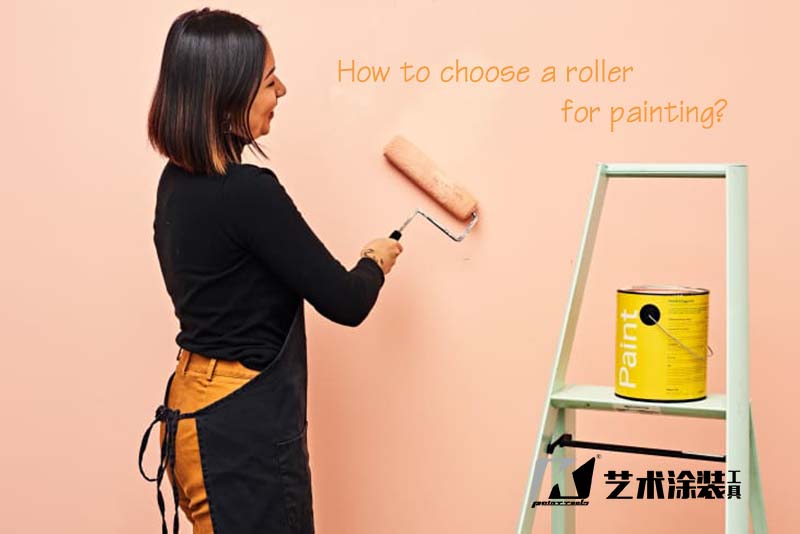
Important characteristics
1. fiber type
2. Length of fibers and hairs
3. Type of product to apply
Characteristics of a paint roller
A paint roller is a tool for painting large smooth surfaces. It is made up of a handle (the handle) and a cylinder (the roller itself). This last element can be replaced independently of the handle.
The paint roller is chosen based on:
The type of support or surface on which you want to apply the paint (smooth, irregular);
the type of product applied (paint, lasur, varnish, plaster);
the desired result.
The paint roller can be used alone, but is often part of a painting kit. It is generally accompanied by at least one brush that will allow you to reach the corners.
Type of roller according to its use
The cylinders of the paint rollers adapt to the surface on which they apply the product. Depending on the result you are looking for, they can be made of different materials or have specific characteristics.
Foam roller
The foam roller is useful for multipurpose uses. It leaves a very smooth finish and is not very resistant to various uses. You can use it, for example, to apply a primer on which to spread a decorative paint or simply to paint a tile with a specific paint.
Roller for decorative protector or lasure
As its name indicates, this roller is specifically for use with products to treat wood that allows it to breathe, staining it and protecting it from UVA rays.
Roller for lacquering (flocked or velour)
This replacement roller is specially designed for surfaces where you want to varnish or lacquer and achieve a very smooth finish. The application of lacquers provides a brilliant finish.
Facade roller
The replacement of a roller for facades has long fibers in order to better cover the irregularities present in the surface that is painted (usually with plaster). You can use it by helping yourself with a telescopic handle or on a scaffolding.
Long hair or wool roller
Long-haired roller adapts to uneven and textured walls. It can be used to paint a brick wall, gotelé or even to apply on the lining of a wall or facade. Attention, because these rollers tend to leak...
Short haired roller
This type of cylinder is recommended for smooth walls, with it a uniform effect is achieved. Its composition and the length of the strands make it known as "anti-drip" because it hardly drips.
Spike type roller
The spike or beehive-type cylinder makes it possible to provide the plaster with a particular structure. This roller has holes all over its surface, and when it is rolled along the surface, it generates irregularities and small points, as if imitating the gotelé.
Effect roller
There are rollers with rough surfaces and various materials, such as leather or polypropylene, arranged in various ways with which decorative finishes can be achieved, creating relief effects.
Material of the roller and its handles
The cylinder of the roller can be made up of synthetic fibers, natural fibers, or a mixture of both.
There are four types of rollers (handles)
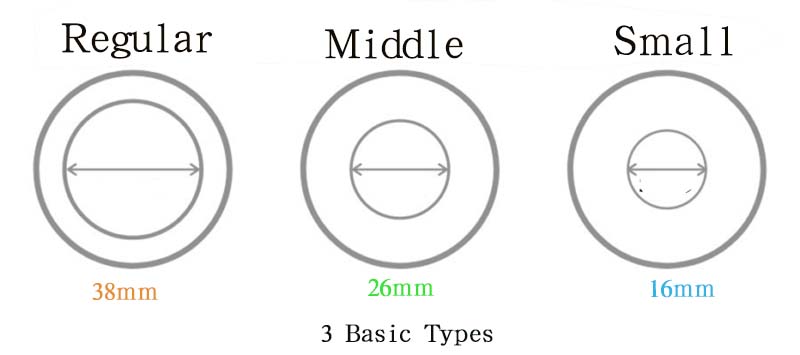
Regular Roller: rarely used
Middle Roller: Roller over 7 inches
Small Roller: Easy to handle and many types
Now 6 inches is popular and there are many types.
Each handle has a different shape
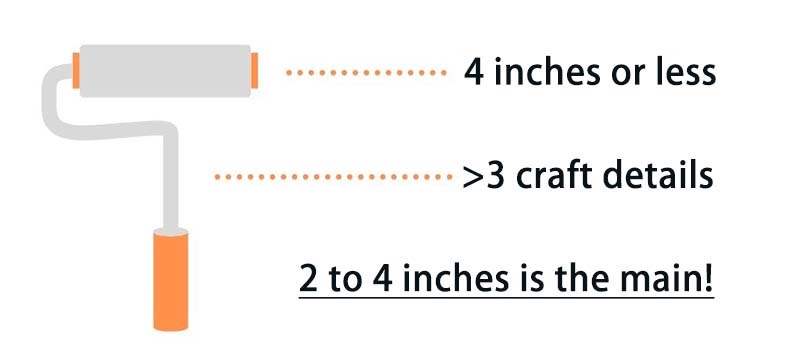
It is commonly known as "Mini-Collo". It's a relatively new type, but it's popular, so the number of types is increasing.
I will explain each in detail.
Middle roller: for 7 inches, low frequency of use
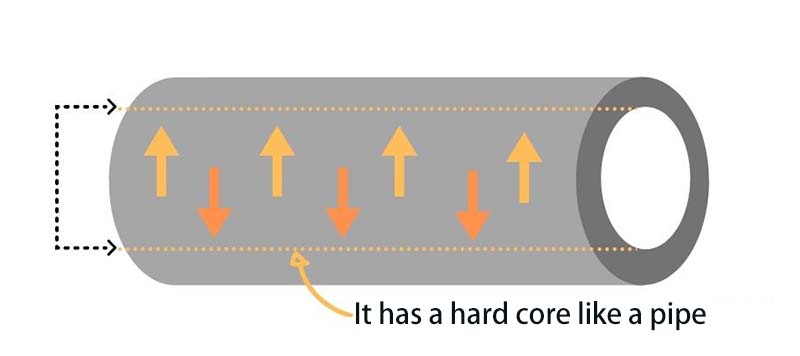
Features of Regular Roller
heavy
have a sense of stability
For 7/9 inches
The regular roller has a solid support and is structured so that the force is transmitted evenly. It is often said that because of its large size, it is suitable for painting large areas, but that is not true. Correctly, it is a roller for painting wide and flat walls with few joints. It is also suitable for using sand bone rollers (rollers for applying patterns) because the subtle amount of force is easily transmitted to the roller.
suitable work
Painting of gypsum board (interior)
When painting the roof with tile sticks, etc.
Exterior wall mastic
There are many cases where considerable technique is required, such as when a professional-grade finish is required. Opportunities to use it in general housing are decreasing. It is also difficult to clean the roller handle after use. If you skip it, it will harden and become garbage.
Middle roller: for 7 inches, low frequency of use
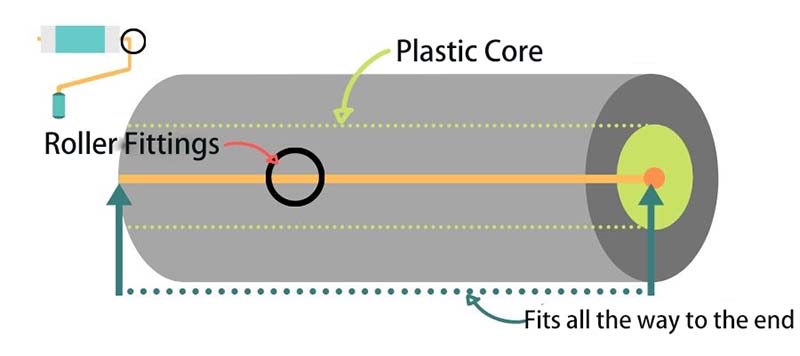
Features of the middle roller
for almost 7 inches
Decent stability
Least frequently used
It's easier to use than regular, but half-finished performance. When asked where to use it, I hesitate. The metal fittings of the handle can be inserted all the way to the end, so there is a sense of stability, but 7 inches is rarely used in the first place. 6 inches is small, but there aren't many cases where you don't even need to use a regular roller. The simple design of the handle makes it easy to wash. It's a very spot-like way of using that 6 inches is not enough.
Small Roller: Easy to use, wide variety, all-purpose type
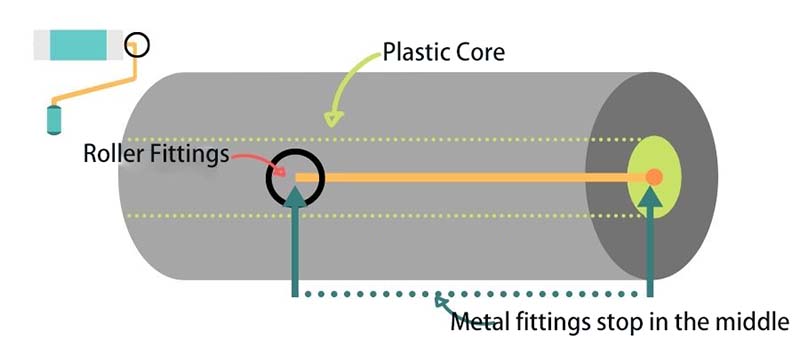
Small roller features
rich in variety
user friendly
For 4/6 inch
The frequency of use is high and the lineup is complete. Speaking of rollers, this is it. It is OK if you use this small roller. Most of the ones from the manufacturer are for 6 inches.
I usually use 6 inches. The number of 4-inch rolls has decreased with the advent of mini rollers. Repainting the exterior walls is enough. Hmm, the worst part is that the stability is inferior to regular rollers.
suitable work
Wall painting (external/internal)
Roof painting (almost general)
General painting (DIY in general)
Regular rollers are fine for special painting and situations, and small rollers are fine for other situations.
Mini Small Roller: Recommend for beginners to reach itchy areas
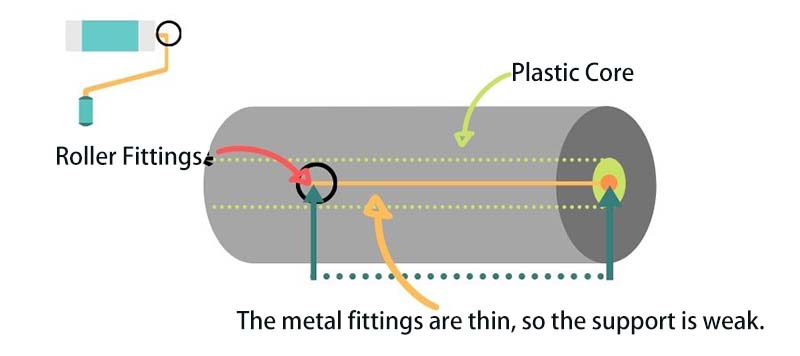
Features of Mini Small Roller
For painting in narrow spaces
insanely light
Suitable for 1-4 inch
*When using 1 to 3 inches, please select the size of the handle as well. The turn of the brush has decreased.
Demand is high, and more and more products are coming out from manufacturers. Versatile and excellent for comfortable painting even in complicated places, especially places where small rollers cannot enter (gap of 3 cm or less, etc.) Narrow places and gaps that could not be painted without a brush have become easier!
The length of the roller handle determines the area that can be applied
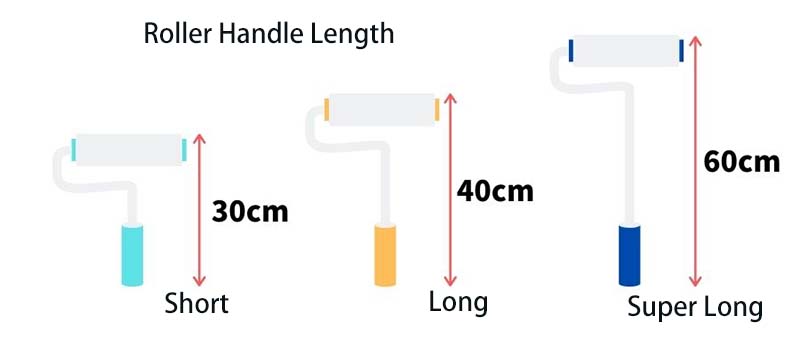
Basically what you choose depending on how much range you want to paint. It's like an extension of your hand, so it gets harder to handle as it gets longer. Basically it is OK if you choose short.
Short handles are often used for exterior walls, etc.
Shorts are easy to use for uneven designs like exterior walls.
Features of the short handle
Easy to handle
easy to apply force
Narrow area to apply at once
The feature of the short handle is that the power is easily transmitted to the roller as much as it is short. It is easy to use for painting uneven surfaces such as outer walls. Because it is easy to handle, it is overwhelmingly short that is used frequently.
Long and super long are suitable for roofs and ceilings
The reason I use long handles like long is because I want to reduce the number of joints. The smooth design of the ceiling and roof (tile bars, etc.) is very conspicuous when there is a seam.
How to remove seams?
Do not create layers of paint
apply an even amount
Bringing Roller Patterns Together
To satisfy the above, it is necessary to apply one coat from end to end. If it is about 2m, it is possible to apply it in one time using a long or super long handle. By the way, if you have a super technique, you can join the patterns together even if you connect them in the middle. It's just that I'm so nervous and tired. In other words, it is easier to paint through as much as possible.
Using High Quality Aluminum extension pole
It is very difficult to master the joint handle attached to the roller. Not for use by amateurs. I think it would be nice if you could imagine cutting vegetables with a "kitchen knife" attached to the tip of the joint. It's not working as I thought it would.
When using extension pole
high wall
ceiling
roof and floor
It is sometimes used to paint high places that are out of reach, but it is also used to paint roofs and floors that are more than 3m long.
How to properly select and use the "hair length" of the roller
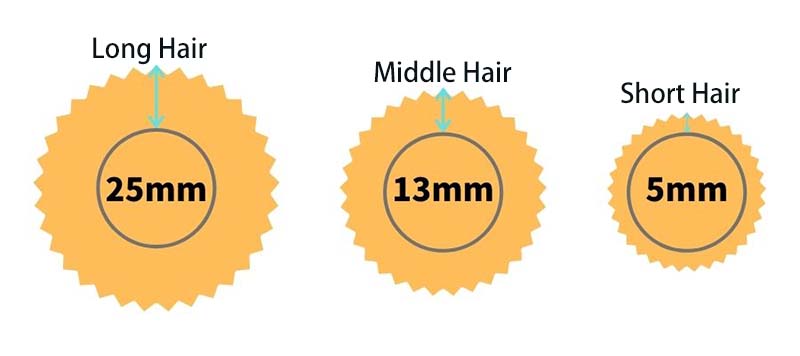
Characteristics of hair length
Long hair: Corresponds to irregularities
Middle hair: good balance
Short hair: Emphasis on finish
We recommend the 17-20mm type, which has a good balance between finish and ease of use.
Short hair is suitable for flat walls and sheet metal (metal) parts

Characteristics of short hair
Beautiful finished skin
Flat plane orientation
Small amount applied at one time
Short hair has a beautiful finished skin, so it is suitable for flat surfaces such as metal. However, it is difficult to paint a wide area because the paint does not hold well.
suitable for
metal plate
plastic
color box etc.
It's a bit difficult to apply, so it might be a good idea to use it only when you want a particularly clean finish.
Medium bristles are all-purpose type and frequently used

The middle hair is a versatile type that can be used in many places. If the hair length is short, the finish will be beautiful, but the middle hair does not change much. Here, the type of roller makes a difference, so you need to choose a roller with a beautiful finish.
suitable for
outer wall
Interior/Wall
Interior/Ceiling
Basically anything is OK, so I think you should use medium hair for the time being. Let's choose 13-17mm if you get lost!
Long hair is suitable for uneven outer walls or colonial roofs

Characteristics of long hair
Rough finish
Can handle unevenness
A wide area can be applied at once
The hair length is long, so it blends well with unevenness. In addition, it is also used when working speed is important because it contains paint well.
suitable for
colonial roof
General siding
Uneven design wall
It is often used for outer walls with many unevenness and colonial roofs. The finished surface is rough, so it is not suitable for flat surfaces. It doesn't appear much in interior work. 25mm or more is less frequently used.
Synthetic Fibers
Synthetic fibers are particularly suitable for the application of acrylic or synthetic paint. Today they are the most developed and adapted to the performance and results of most paints.
Mixed Fibers
Mixed fibers are suitable for oil or solvent based paints.
Natural Fibers
Natural fibers are recommended for all types of paints and facilitate performance, although they require greater skill in handling.
Handle or Mount
The choice of handle is above all a matter of common sense. Here are two elements that can guide you when choosing: to reach the ceilings, a long handle is better, although you can also equip yourself with an extension (even telescopic) to fix the handle. You can also use a ladder or a stool; If we talk about cleaning, the handle can be made of wood, plastic or bi-material. Cleaning the latter is easier, and water is used for acrylic paint or white spirit for solvent paint.
A product for each use
The vast majority of paint rollers are designed for a specific use usually indicated as: roller for walls and ceilings, roller for lacquering wood, etc. Here are some criteria to select them quickly.
Paint furniture and doors
Furniture and doors must be painted with a lacquer roller (flocked or velor) with synthetic fibers, about 5 mm thick, to achieve a well-extended and smooth effect. If you are considering a project to paint wooden doors or furniture, we recommend that you carefully choose your wood paint and properly prepare the surface to be painted, a necessary condition for an optimal finish.
Ceilings and Walls
A lightly textured ceiling or wall is painted with a non-drip roller, with fibers about 12mm thick. Combine your roller with a special paint for walls and ceilings, with a good protection of windows, furniture and floors. For ease of application, use a paint bucket and/or drain rack. If you have planned a task of this type, try to equip yourself with an extension cord.
Smooth Walls
A smooth wall should be painted with a wall roller with 10 mm thick fibers. If you decide to repaint your kitchen or bathroom, we advise you to use a special paint for bathrooms and kitchens that protects them against the effects of humidity and prevents premature aging of your coating.
Facades and Exterior Cladding
The facades and exterior cladding are painted with approximately 18 mm fiber rollers. Choose a special roller for facades or wool to resist without losing the fibers. If you plan to apply your paint on wood, for example on a facade with a wooden cladding or cladding, we advise you to read our recommendations on the choice of paint for exterior wood, so that you can choose the best protection.
Plasters: cement, concrete, plaster
Renders are applied with a pick or beehive roller. The replacement of the roller has the particularity of presenting a structure that allows generating points and that serves to provide texture to the plaster or the facade.
Essential accessories to use with the rollers
To repaint walls and ceilings in good condition and to improve the final result, you must make a good preparation of the supports. There are essential painting tools that allow you to protect, prepare and clean materials and utensils.
For your future projects, equip yourself with:
1. A protective tarpaulin and masking tape to protect your floors from paint splashes and drips, and to cover up areas you don't want to paint;
2. A bucket for paint to dose the amount of paint impregnated in the roller for each pass;
3. Solvent to clean your rollers and brushes between uses;
4. A protective mask to be safe from volatile organic compounds (VOCs) harmful to health.
Top Tips: These paint roller hacks will make you more productive
Even on the weekends, a fresh coat of paint can change the look and feel of the entire space. If only the paint is already on the wall, the brushes and rollers will clean themselves. Before there's an application, use these paint roller tips and tricks to make the whole project much easier.
Some paint rollers, by their very nature, are blurry. But it's no fun when some of the fluff ends up stuck in the wet paint on the wall, and you have to manually remove it before everything dries. One way to cut down on the hassle is to remove any loose fibers from the rollers before you start. You can do this with a lint roller, or even normal packing tape.
Wall prep is an often-skipped step that can lead to a number of failures, such as lack of adhesion, poor hiding, poor sheen uniformity, or an uneven surface appearance.Before painting, thoroughly clean the surface and allow to dry. Remove wallpaper and loose, peeling paint. Sand glossy surfaces dull, and wipe clean. Patch cracks, and spot prime.
Cutting in, or painting areas that are too tight for rolling (molding, baseboard, ceiling line, etc.), is one of the most time-consuming parts of any paint project. It generally takes immense precision or a lot of patience with tape, but using an angled brush with stiffer bristles (like this one) will provide the sharpest cut-in lines, without the need for tape.
Save money by using an old roller instead of buying a new one each time. If your roller isn't 100% clean after the last project, use a pair of scissors to cut off the crusty bits - especially at the ends - then stick it to the frame and start over. Fresh paint will be smoother on the walls.
Some may not know that you don't need to buy special extension rods in the paint section of the hardware store. If you have a mop or broom with a wooden handle, remove it from the base and screw it into the bottom of the paint roller frame. It's one less thing to buy and store.
Paint jobs often take more than a day. If you plan to finish it tomorrow, or even the next day after, wrap the wet paint roller in plastic wrap so it won't be exposed to the air. (To be honest, I usually don't even take it off the frame.) Better yet, keep it in the fridge overnight. When you're ready to get back to work, just open the pack and your roller should still be wet and ready to go. When you're done painting, use a straight-edged tool, like a putty knife or even a ruler, to scrape the excess paint off the roller and put it back in the can. The less paint on the roller, the quicker and easier it will be to clean.
When it's time to clean your supplies, mix 1/2 cup fabric softener with a gallon of warm water in a bucket. Fabric softeners reduce the surface tension between liquids and solids, making the water "wetter". Let the roller soak for a while and the fabric softener will take effect. Then, rinse.
Conclusion:
Choosing a roller is important for efficient exterior painting. This is because the speed and finish of work can be improved simply by changing the roller. Inexperienced craftsmen make many useless movements, and even if they work in a hurry, they will not get what they want, and they will have a hard time when they are just starting out. An easy-to-use roller is essential for efficient exterior painting.
 Previous: How to Choose Paint Tools
Previous: How to Choose Paint Tools














